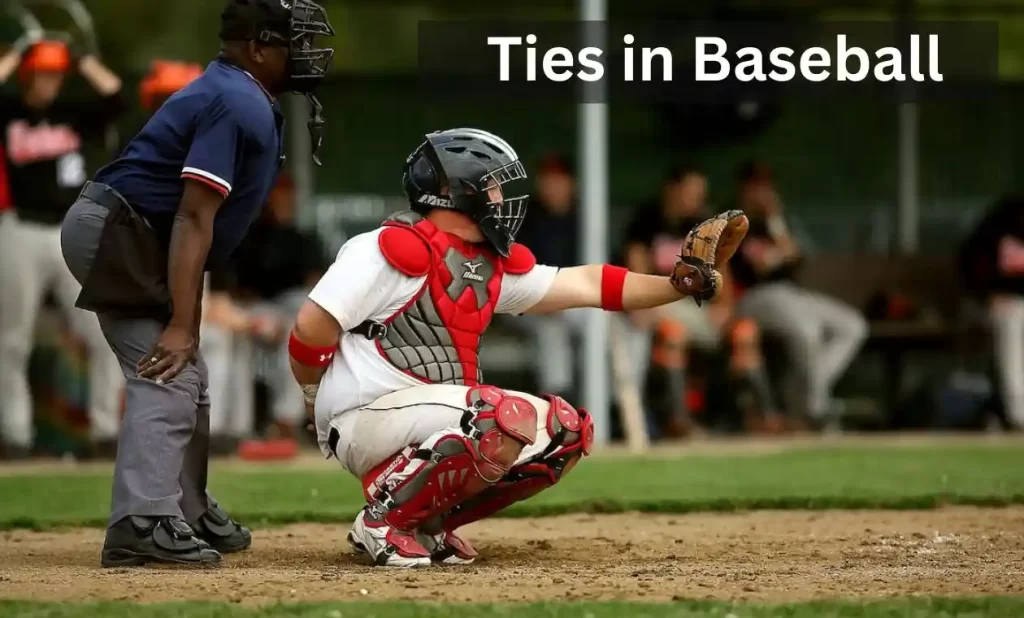
In the intricate world of baseball, a “flyout” stands as a pivotal term that encapsulates a specific play during a game. A flyout occurs when a batter hits the ball into the air, and a defensive player successfully catches it before it touches the ground. This fundamental play contributes to the dynamics of the sport, shaping the ebb and flow of innings.
The significance of comprehending the concept of a flyout extends beyond the basic rules of the game. It serves as a cornerstone for fans, players, and enthusiasts alike, forming the building blocks of baseball knowledge. With a precise definition in mind, spectators can engage more deeply in the unfolding action on the field, appreciating the strategic maneuvers that players employ to secure or prevent a flyout.
Understanding different baseball terms, such as the flyout, enhances the overall spectator experience and fosters a connection to the game’s intricacies. As we embark on this exploration, we’ll not only define the flyout but also unravel its distinctions from related terms like pop outs and lineouts. Join us on a journey through the lexicon of baseball, where each term contributes to the rich tapestry of this beloved sport.
Basics of Baseball Outs: The Essence of Defensive Mastery
In the realm of baseball, the concept of “outs” serves as the linchpin of defensive strategy, exerting a profound influence on the flow and outcome of a game. Let’s delve into the basics, exploring the diverse types of outs and unraveling the pivotal role they play in shaping the narrative of each inning.
Overview of Different Types of Outs
- Strikeouts (K): The pitcher throws three strikes, and the batter fails to make contact.
- Groundouts (GO): The batter hits the ball, resulting in a ground-level play that ends with an out.
- Flyouts (FO): As we’ve delved into earlier, the batter hits the ball into the air, and it’s caught before touching the ground.
- Pop Outs: Like flyouts, but with a distinct trajectory usually involving a higher, shorter path.
- Lineouts: The ball is hit sharply, but directly into a fielder’s hands, resulting in an out.
Importance of Defensive Plays
- Controlling Momentum: Defensive plays, especially successful outs, have the power to shift the momentum within an inning or even an entire game. They can deflate the opposing team’s morale or ignite enthusiasm among players and fans.
- Limiting Runs: Each out prevents the progression of baserunners and contributes to limiting the opposing team’s scoring opportunities. A robust defense is often the bedrock of successful baseball teams.
- Precision and Coordination: Defensive plays demand precision, coordination, and split-second decision-making. Players must anticipate the trajectory of the ball, position themselves strategically, and execute seamless plays to secure outs.
In essence, the basics of baseball outs underscore the intricate dance between offense and defense. Successful defensive plays not only showcase athleticism and skill but also serve as the heartbeat of a well-played game, captivating audiences with every pitch and catch.
Exploring Flyouts: Mastering the Art of Controlled Ascent
A. What Is a Flyout?
- Clear Definition and Scenarios: In baseball, a flyout transpires when a batter strikes the ball into the air, and a defensive player, typically an outfielder, successfully catches it before it contacts the ground. The trajectory of the hit determines the nature of the play. A flyout can manifest as a high, arching flight or a more straightforward line drive, both challenging the defensive team to execute precise maneuvers.
Scenarios vary, but a classic example is a well-hit ball that soars into the outfield, prompting an outfielder to sprint to the location where they predict the ball will descend. The outcome hinges on the coordination between the batter’s skill, the pitcher’s delivery, and the fielder’s ability to gauge and intercept the ball mid-air. - Importance in the Game: The significance of flyouts in baseball is multifaceted. First and foremost, a successful flyout represents an out for the defensive team, halting the offensive team’s progress and thwarting potential scoring opportunities. This defensive maneuver is particularly crucial in tight situations, influencing the overall dynamics of the game.
Additionally, flyouts contribute to strategic plays. In certain circumstances, a batter may intentionally aim for a flyout to advance a baserunner or score a run through a sacrifice play. The ability to control the trajectory of a hit and execute precise flyouts is a testament to a team’s defensive prowess.
Beyond statistics and strategy, the beauty of a well-executed flyout lies in the athleticism and coordination required to make it happen. It showcases the delicate balance between offense and defense, turning what could be a potential offensive play into a strategic defensive victory.
The Difference Between a Flyout and Pop Out
Defining Pop Outs
Pop outs, akin to flyouts, occur when a batter hits the ball into the air, but there are distinctive characteristics that set them apart. A pop out typically involves a batted ball reaching a higher vertical trajectory in a shorter horizontal distance. The ball ascends abruptly, making it challenging for infielders to position themselves for a catch.
Pop outs often result from a batter making contact with the top part of the ball, causing it to rise sharply. Infielders, particularly the shortstop and second baseman, play crucial roles in securing pop outs, as they need to cover a relatively shorter distance compared to outfielders.
Comparing Characteristics with Flyouts
While both pop outs and flyouts share the commonality of a batted ball in the air, the primary distinction lies in the trajectory and fielding dynamics. Flyouts generally have a more extended, arcing trajectory, and they often occur in the outfield. Outfielders, possessing a broad field to cover, are frequently involved in securing flyouts.
In contrast, pop outs tend to stay within the infield or the shallow outfield. The abrupt ascent of the ball demands quick reflexes from infielders, making these plays distinctively different from the more leisurely paced outfield flyouts.
Real-Game Examples
- Flyout Example: A batter connects with the ball, sending it on a graceful, sweeping trajectory toward the deep outfield. An outfielder gauges the ball’s path, covers the ground swiftly, and secures the catch, resulting in a classic flyout.
- Pop Out Example: Another batter hits a ball sharply upward within the infield. The shortstop positions themselves adeptly, tracking the ball’s rapid ascent, and manages to catch it while navigating the limited space, marking a textbook pop out.
Real-game examples illustrate how these distinctions unfold in the dynamic context of a baseball game, showcasing the nuances between flyouts and pop outs. As we continue our exploration, we’ll further unravel the intricacies of these plays and their roles in the broader spectrum of baseball tactics.
Distinguishing Flyouts from Lineouts
Defining Lineouts
Lineouts in baseball occur when a batter hits the ball with a swift and flat trajectory directly into the hands of a defensive player, usually an infielder. The defining characteristic of a lineout is the speed and directness of the hit, making it distinct from the more arching and airborne trajectory of flyouts.
Lineouts often involve a batter making solid contact with the ball, but the direct path allows infielders to react quickly. Shortstops, second basemen, and third basemen are commonly involved in fielding lineouts due to their strategic positioning.
Illustrating Differences with Flyouts
While both lineouts and flyouts involve the batter hitting the ball into the air, the primary distinction lies in the trajectory and angle of the hit. Flyouts have a more pronounced upward arc, often taking the ball into the outfield, and involve outfielders in the play. In contrast, lineouts maintain a flatter, direct trajectory, keeping the ball within or near the infield.
Another key difference is the reaction time for fielders. Lineouts demand quick reflexes from infielders who need to be prepared for a ball traveling at a rapid pace directly towards them, whereas flyouts give outfielders more time to cover ground and position themselves for the catch.
Common Instances on the Field
- Flyout Scenario: A batter launches the ball into the air with a graceful, sweeping trajectory, aiming for the deep outfield. An outfielder tracks the ball, covers substantial ground, and secures the catch, marking a classic flyout.
- Lineout Scenario: In a different play, the batter makes a swift and powerful hit, sending the ball on a flat trajectory directly towards the shortstop. The shortstop reacts quickly, positioning themselves adeptly, and catches the ball, resulting in a textbook lineout.
Common instances on the field showcase the tactical differences between flyouts and lineouts, emphasizing the varied roles of infielders and outfielders in these defensive maneuvers. As we navigate through these distinctions, we gain a more comprehensive understanding of the dynamic interplay between batters and defenders in the intricate game of baseball.
Pop Flies and Fly Balls
A. Understanding Pop Flies
Characteristics and Trajectory
Pop flies are a distinctive type of batted ball in baseball, characterized by a high, vertical trajectory. When a batter contacts the bottom part of the ball, it results in a pop fly that ascends sharply, typically reaching a height that challenges infielders to make the catch. The trajectory of a pop fly is often shorter, and steeper compared to fly balls, making them a unique challenge for defensive players.
The ball’s height during a pop fly is crucial – it hovers in the air long enough for fielders to track and position themselves, but not as extensively as a traditional flyout. Infielders need to react swiftly to secure the catch before the ball descends.
Relationship to Flyouts
While pop flies share similarities with flyouts, especially in terms of being airborne hits, the key distinction lies in the trajectory and where these plays typically occur.
- Trajectory: Pop flies have a more abrupt ascent, making them stay within the infield or shallow outfield. This allows infielders, particularly the shortstop, second baseman, or even the catcher, to have a primary role in securing the catch.
- Location on the Field: Flyouts, on the other hand, often involve longer, arcing trajectories that reach the deeper outfield. Outfielders are typically responsible for catching flyouts.
Understanding the characteristics of pop flies is essential for infielders, as mastering the skill of catching these high, vertical hits adds a crucial layer to their defensive capabilities. As we explore further, we’ll delve into how these distinctions impact defensive strategies and contribute to the overall dynamics of a baseball game.
Grasping Fly Balls
Defining Fly Balls
Fly balls in baseball refer to batted balls that are hit into the air, typically with a trajectory that sends them into the outfield. Unlike line drives that stay close to the ground, fly balls ascend at a moderate to high angle, making them a crucial aspect of offensive plays. The success of a fly ball often relies on the batter’s ability to hit the ball at an optimal angle for distance without sacrificing too much power.
The flight path of a fly ball gives outfielders the opportunity to track its trajectory, cover ground, and position themselves to make a catch. Fly balls can vary in distance and height, providing an added layer of complexity to defensive strategies.
How They Differ from Flyouts
While the terms “fly ball” and “flyout” might sound similar, they have nuanced differences that impact their significance in the game.
- Trajectory and Distance: A fly ball encompasses a broader category of hits that includes both catchable and uncatchable balls, whereas a flyout specifically denotes a catchable fly ball resulting in an out. A well-hit fly ball might sail over the outfield fence for a home run, while another may be caught by an outfielder for an out.
- Defensive Dynamics: Outfielders play a pivotal role in both fly balls and flyouts, but not all fly balls lead to outs. Fielders need to discern whether a particular fly ball is within reach for a catch or if it will result in a hit or even a home run.
Understanding the distinction between fly balls and flyouts is crucial for both offensive and defensive players. It influences offensive strategies in hitting for distance, and defensively, it guides outfielders in determining when to pursue a catch and when to prepare for potential base advancement by the opposing team. As we continue our exploration, we’ll further uncover the strategic elements tied to fly balls in the intricate game of baseball.
Lineouts in Baseball: Deciphering Swift Strikes and Defensive Mastery
In baseball, a lineout is a defensive play that unfolds when a batter connects with the ball, sending it on a swift and direct trajectory directly into the hands of a defensive player, typically an infielder. This type of hit is characterized by its low, flat trajectory, distinguishing it from the more arching and airborne nature of flyouts. Let’s embark on an in-depth exploration of what constitutes a lineout and examine examples that illuminate the impact of this play in real games.
What Constitutes a Lineout
- Swift and Low Trajectory: The defining feature of a lineout is the rapid, horizontal path the ball takes. Unlike fly balls that soar into the air or ground balls that roll along the field, lineouts maintain a flat trajectory that demands quick reflexes from the defensive players.
- Direct Path to a Fielder: A critical aspect of a lineout is that the ball is hit directly towards a defensive player, often an infielder. Shortstops, second basemen, and third basemen are frequently involved in fielding lineouts due to their strategic positioning.
Examples Showcasing Lineouts in Real Games
- Example 1: The batter swings, making solid contact with the ball, and it zooms directly towards the shortstop. The shortstop, anticipating the trajectory, swiftly extends their glove, snatching the ball out of the air, and secures the out.
- Example 2: Another instance sees a line drive heading directly towards the second baseman. With lightning-fast reflexes, the second baseman lunges to the side, making a stunning catch just above the grass, turning a potentially powerful hit into a quick out.
- Example 3: In a crucial moment, a batter aims for a gap between the third baseman and shortstop with a line drive. The third baseman, positioned perfectly, leaps and makes a mid-air catch, thwarting the offensive play and showcasing the defensive prowess required for a successful lineout.
These real-game examples highlight the swiftness and precision demanded in handling lineouts. The ability of defensive players to react quickly and secure outs in the face of powerful, low-trajectory hits underscores the strategic importance of lineouts in preventing offensive advancements. As we delve deeper into the intricacies of baseball, understanding and appreciating the role of lineouts enhances our grasp of the sport’s defensive dynamics.
Conclusion: Unveiling the Beauty of Baseball Terminology
In the vibrant tapestry of baseball, where each play unfolds like a carefully scripted act, understanding the nuances of terminology is akin to unlocking the secrets of the game. As we’ve delved into the intricacies of flyouts, pop outs, lineouts, pop flies, and fly balls, it becomes evident that these terms are not mere jargon but integral threads weaving the narrative of each inning.
The importance of knowing baseball terminology extends beyond the confines of the diamond. It empowers fans, players, and enthusiasts to engage more deeply in the unfolding drama, appreciating the strategic choreography that occurs between the pitcher’s mound and the outfield fences. Recognizing a flyout from a pop out or deciphering a lineout elevates the spectator experience, allowing for a profound connection to the balletic movements on the field.
In encouraging a deeper appreciation for the game, we uncover the beauty in the coordination, athleticism, and split-second decisions required in each play. Baseball is more than a sport; it’s a language of its own, spoken through crackling hits, precise catches, and strategic finesse. So, let us not merely watch but immerse ourselves in the lexicon of baseball, where every term, every play, contributes to the timeless symphony of America’s favorite pastime.
As we embrace the intricacies, we cultivate a richer understanding, transforming each game into a celebration of skill, strategy, and the enduring allure of baseball.
Related Article:

Meet Daniel Anderson, the heart and soul behind Baseball Pro Picks. At 49, Daniel’s life has revolved around baseball, a passion that’s as strong today as it was when he first fell in love with the game. Living in the USA, Daniel has dedicated countless hours to watching, analyzing, and understanding every pitch, hit, and home run, making almost no game missed. His deep-rooted love for the sport is matched only by his commitment to sharing insightful, expert analysis with fellow baseball enthusiasts. With decades of experience and a keen eye for the game’s nuances, Daniel brings a unique perspective that enriches Baseball Pro Picks. Trust Daniel to guide you through the intricacies of baseball with the authority and trustworthiness of a true aficionado.












